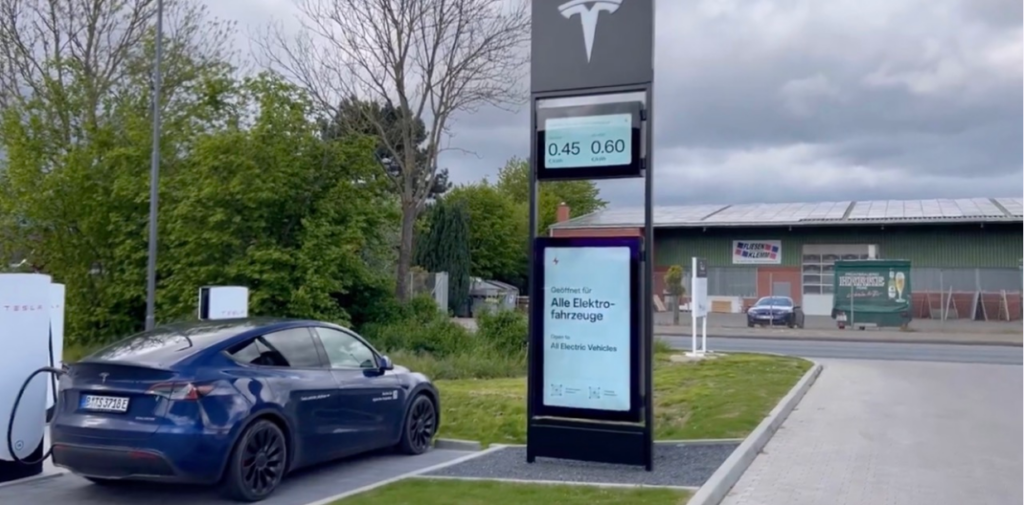Digital-Out-of-Home (DOOH) advertising has transformed how brands connect with audiences in real-time, leveraging technology to deliver dynamic and impactful campaigns. DOOH advertising is where technology meets real-world impact. From eye-catching billboards to interactive mall displays, it grabs attention and drives results.
Let’s explore real-world examples of DOOH campaigns that connect with audiences and deliver measurable success. Below are unique examples of DOOH campaigns that stand out, detailed with their key takeaways for inspiration.
1. Burger King’s Real-Time Traffic Jam Ads

Burger King turned traffic congestion into an opportunity with their innovative campaign in Brazil. Digital billboards located near gridlocked areas displayed live traffic conditions along with wait times at nearby Burger King outlets. The ads urged drivers to use the Burger King app to pre-order meals and pick them up without stepping out of their vehicles. This approach not only eased the frustration of being stuck in traffic but also increased app downloads and boosted sales during peak traffic hours.
Key Takeaway: Real-time data integration turns inconvenience into opportunity and enhances brand utility, driving both engagement and conversions.
2. Amazon Prime Video’s 3D Anamorphic Ads

Amazon Prime Video used cutting-edge 3D DOOH technology to promote blockbuster shows. Screens in busy locations featured realistic, larger-than-life animations of characters, captivating passersby and creating a buzz both offline and online.
Key Takeaway: Innovative visuals grab attention and enhance recall value.
3. The Louvre’s Digital Art Showcases

The Louvre Museum turned the streets of Paris into a digital art gallery. High-resolution images of famous artworks were displayed on digital billboards, coupled with QR codes that allowed passersby to learn more about the pieces or buy tickets to the museum. This campaign brought culture closer to the public while promoting footfall at the museum, bridging the gap between digital and physical worlds.
Key Takeaway: DOOH campaigns can serve cultural and educational purposes while driving measurable outcomes, such as ticket sales and awareness.
4. WWF’s Climate Change Awareness Campaign

The World Wildlife Fund (WWF) leveraged DOOH screens to create a powerful visual narrative on the effects of climate change. Dynamic displays showcased lush green landscapes gradually transforming into barren deserts or melting ice caps, symbolizing environmental degradation. By coupling the visuals with a call-to-action to support climate initiatives, the campaign succeeded in raising awareness and driving donations.
Key Takeaway: Emotional storytelling through visuals can evoke a sense of urgency and inspire immediate action for social causes.
5. Apple’s Dynamic OOH Photography Contest

Apple’s “Shot on iPhone” campaign showcased user-generated photos on iconic digital billboards worldwide. Combining stunning visuals with social proof, this campaign celebrated Apple customers while reinforcing the iPhone’s camera quality.
Key Takeaway: User-generated content adds authenticity and credibility to campaigns.
6. UNICEF’s Donation Drive with Interactive Screens

UNICEF utilized interactive DOOH displays in shopping malls, enabling passersby to donate directly via QR codes on the screens. The real-time tally of donations encouraged more participation.
Key Takeaway: Interactive ads with a purpose drive both engagement and action.
7. Tesla’s Electric Vehicle Charging Awareness Ads

Tesla placed DOOH screens at EV charging stations to educate people about the environmental benefits of switching to electric vehicles. The screens displayed real-time data on CO2 emissions saved by electric cars compared to traditional vehicles, reinforcing Tesla’s commitment to sustainability. This campaign not only informed but also positioned Tesla as a leader in the green energy movement.
Key Takeaway: Combining education with location-specific relevance amplifies the impact of brand messaging.
8. Dubai’s Expo 2020 Countdown Campaign

In the lead-up to Expo 2020, Dubai used DOOH screens across the city to create anticipation and excitement. The campaign featured a dynamic countdown on prominent digital billboards, accompanied by stunning visuals of Expo’s pavilions and attractions. Some screens integrated real-time social media feeds showcasing user-generated content about Expo, while others displayed personalized welcome messages for international visitors arriving at the airport. The campaign perfectly captured Dubai’s innovative and futuristic spirit, engaging both locals and tourists.
Key Takeaway: Incorporating countdowns, real-time engagement, and personalized messages makes large-scale events unforgettable, creating hype while fostering a sense of inclusivity and anticipation.
Creating Impact with Location-Based DOOH Campaigns
Location-based Digital-Out-of-Home (DOOH) advertising has proven to be a game-changer for brands aiming to connect with audiences in the right place at the right time. By targeting high-traffic areas such as shopping malls, airports, and busy street corners, brands can ensure their message reaches a broad, relevant audience.
These strategically placed screens not only catch the attention of passersby but can also deliver highly personalized content based on location data.
Conclusion
From data-driven ads that leverage real-time insights to emotionally impactful campaigns that inspire action, these examples demonstrate the vast potential of DOOH advertising. By combining creativity, technology, and strategic relevance, brands can captivate their audiences and achieve measurable results.
Ready to take your campaigns to the next level? Explore how Hype Loop’s self-serve platform can bring your DOOH vision to life!



